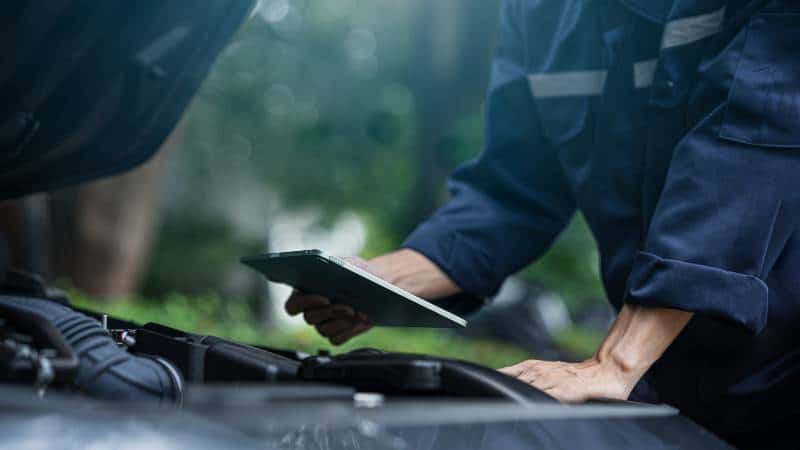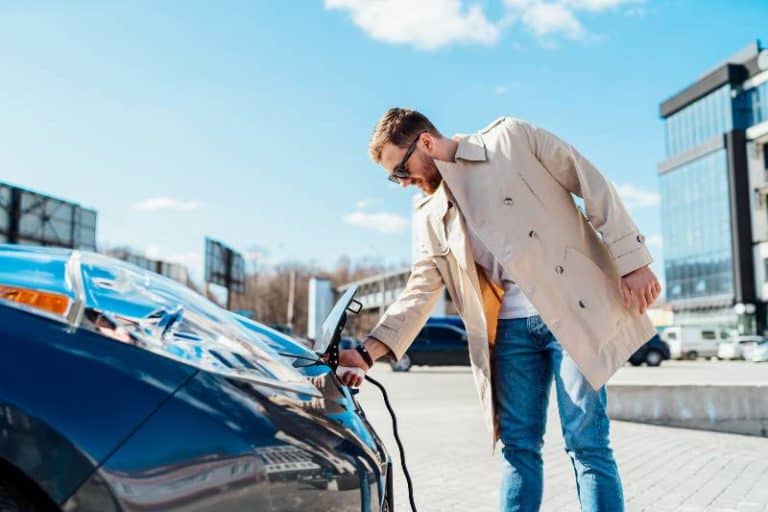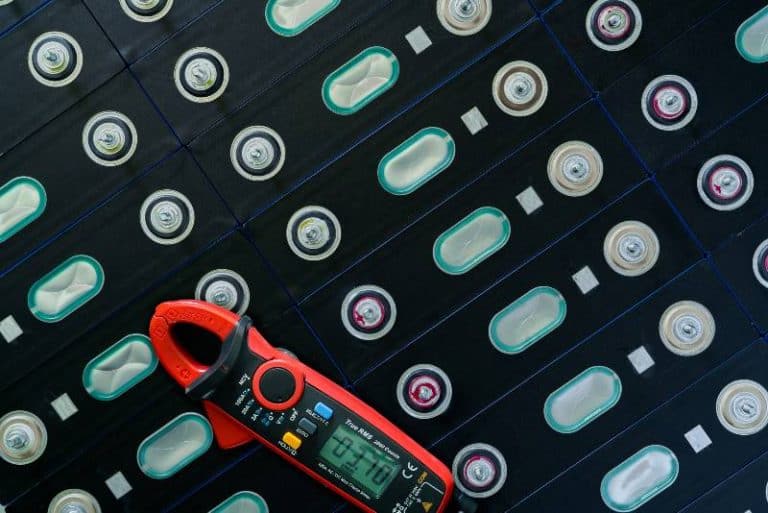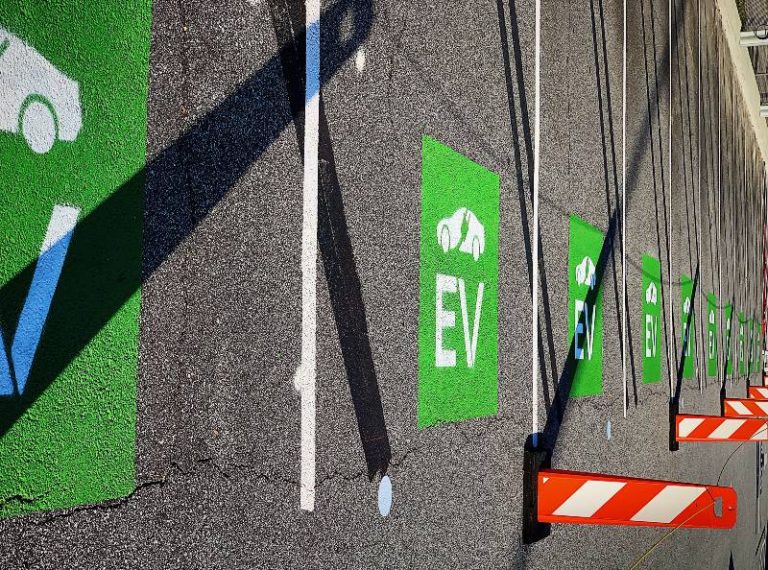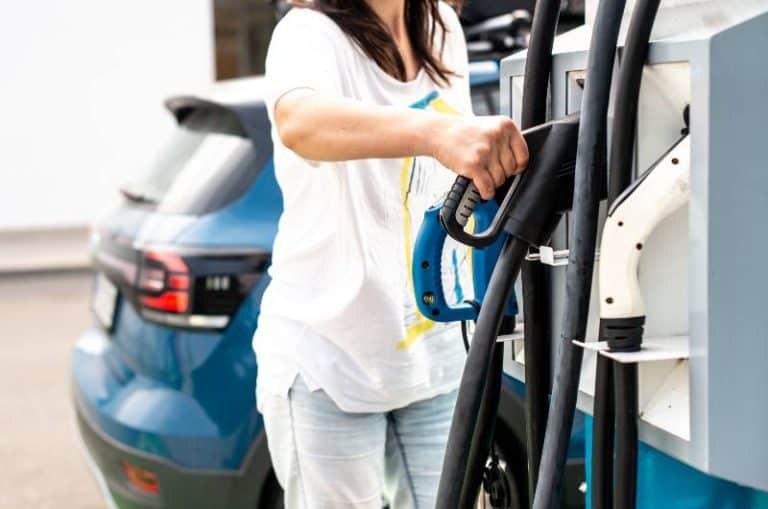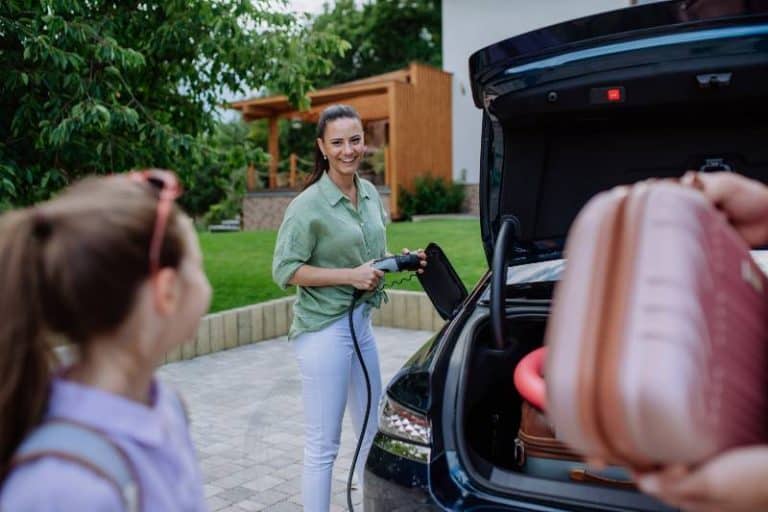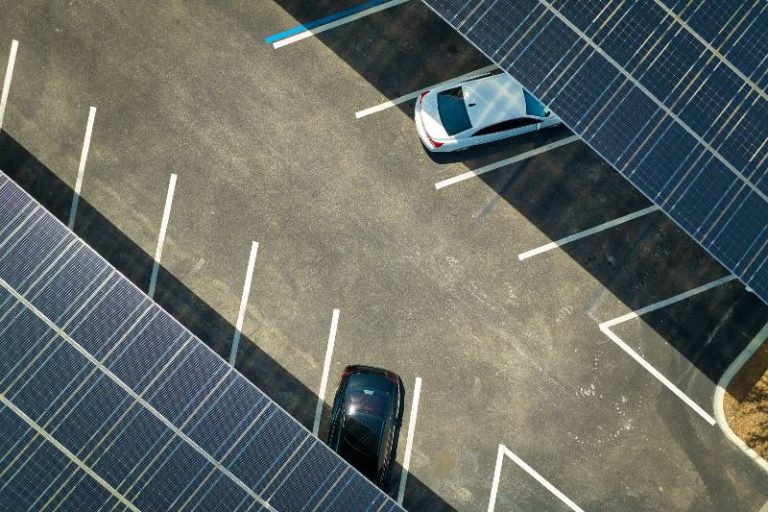NMC Vs. LFP: Battle of EV Batteries in Cold Climates
If you live in a colder climate, deciding between nickel-metal hydride (NMC) and lithium ferrophosphate (LFP) electric vehicle (EV) batteries can be tough. NMCs are known for their high energy density but suffer from poor performance when temperatures drop. On the other hand, LFPs have better cold temperature performance due to their reversible chemical reactions, yet they tend to provide less range than an NMC battery.
Let’s take a closer look at why it is important to consider colder climate conditions when picking your EV battery type, as well as how NMC and LFP batteries fare in lower temperatures.
Compared to LFP batteries, which can endure over 3,000 charge cycles, reaching 6,000 with proper use and maintenance, NMC batteries offer a more limited lifespan of only 1,000 to 2,000 charge cycles. Furthermore, LFP batteries exhibit a remarkably low self-discharge rate of only 3% per month, while NMC batteries degrade at a faster rate of 4% per month.
Key Takeaways
- In colder climates, the efficiency and performance of EV batteries are crucial. NMC and LFP batteries exhibit different behaviors, with one potentially being more efficient and offering better range in low temperatures.
- Safety is paramount, especially in extreme weather conditions. The thermal stability of the battery types in cold climates can impact the overall safety of the EV, making it a critical factor in battery selection.
- The cost and availability of NMC and LFP batteries can significantly influence consumer choices. Understanding the market presence and price points of these batteries can help consumers make informed decisions based on their specific needs and the climates they live in.
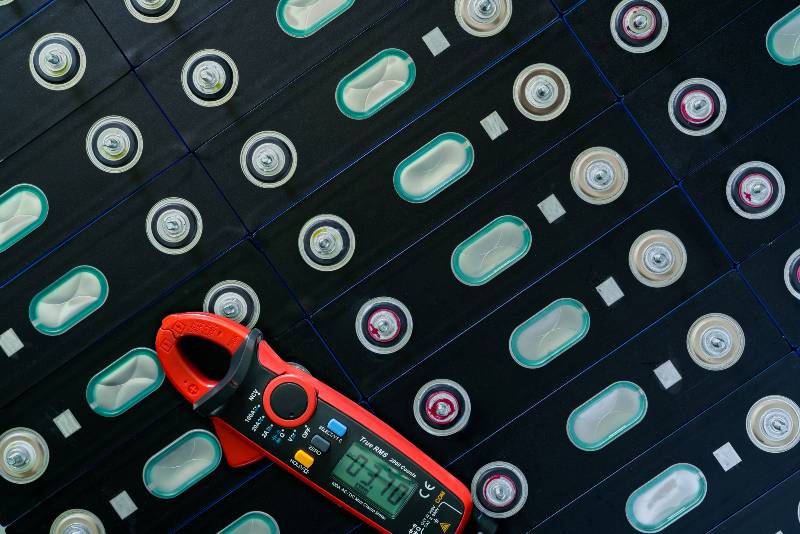
Background
NMC (Nickel Manganese Cobalt) Batteries
Nickel-Manganese-Cobalt (NMC) batteries are a popular type of lithium-ion battery. They are widely used due to their balanced properties that offer a compromise between high energy, power density, and extended lifespan.
The name ‘NMC’ refers to the chemical composition of the battery’s cathode material, specifically Nickel (Ni), Manganese (Mn), and Cobalt (Co). The precise ratios of these materials can vary significantly, which can allow for the fine-tuning of the battery’s properties. The most common compositions include the 1-1-1 (equal parts nickel, manganese, and cobalt), 5-3-2, and 6-2-2 ratios.
The cathode itself is physically a layered oxide structure which can accommodate lithium ions within it. During discharging, lithium ions move from the cathode to the anode.
LFP (Lithium Iron Phosphate) Batteries
Lithium Iron Phosphate (LFP) batteries are another type of lithium-ion battery, known for their long cycle life, safety, and good thermal stability.
Like NMC batteries, ‘LFP’ also describes the chemical composition of the battery’s cathode – specifically, Lithium (Li), Iron (Fe), and Phosphate (PO4).
Unlike the layered structure of other lithium-ion batteries, LFP batteries have a cathode material with a unique olivine crystal structure that provides more stable performance and safety over time. During discharging, lithium ions move from the cathode to the anode.
Although they have a lower energy density compared to NMC batteries, LFP batteries provide a high current rating, making them ideal for applications requiring high power output like electric vehicles and large-scale energy storage systems.
Performance in Cold Weather
Effects of Cold Weather on Battery Performance
Cold weather can have a significant impact on battery performance, as it affects the battery’s internal chemical reactions, energy output, and overall efficiency. Key challenges associated with cold weather include:
- Decreased capacity: Cold temperatures lead to a reduction in the rate of electrochemical reactions within the battery. This reduction can result in lower available capacity and longer charging times.
- Increased internal resistance: Low temperatures can cause an increase in a battery’s internal resistance. This can lead to more substantial voltage drops under high current loads and a reduction in overall efficiency.
- Thermal management: Keeping the battery within its optimal operating temperature range is crucial for its longevity and performance. Operating a battery in extremely cold conditions may require additional thermal management mechanisms.
Comparative Analysis of NMC and LFP Batteries in Colder Climates
NMC and LFP batteries exhibit different responses to cold weather, primarily due to their distinct chemistries and electrode configurations.
NMC Batteries:
- NMC batteries can exhibit a more significant capacity loss in colder temperatures compared to LFP batteries.
- As temperature decreases, NMC battery performance may degrade more rapidly due to the increased internal resistance affecting voltage output.
- NMC batteries rely on their balance between energy density and power density, which can be compromised in cold weather, causing additional challenges in high-demand applications like electric vehicles.
LFP Batteries:
- LFP batteries tend to perform better in cold weather conditions than NMC batteries due to their inherent chemical and structural properties.
- Their olivine crystal structure enables improved stability, which translates to better performance and less capacity loss in cold climates.
- Though LFP batteries generally have lower energy density than NMC batteries, their high power output and resistance to temperature fluctuations, make them a suitable choice for applications that demand high performance in colder climates.
While both NMC and LFP batteries can be affected by cold weather, LFP batteries generally offer better performance and reliability in colder climates due to their unique chemistry and structural configuration. To choose the most suitable battery technology for a specific application, it is vital to consider factors like energy density, thermal management, and safety requirements, alongside temperature sensitivity.
Efficiency and Range
NMC vs. LFP EV Batteries: A Chilled Out Showdown
The choice of battery technology in electric vehicles (EVs) is a crucial determinant of their performance, particularly in colder climates. In this context, two battery types often spring to the forefront – Nickel Manganese Cobalt (NMC) batteries and Lithium Iron Phosphate (LFP) batteries. The proficiency and longevity of both types in colder temperatures can vary significantly, impacting your EV experience.
The Cold Truth About Efficiency and Range
A key factor that sets EVs apart is their efficiency range, particularly in colder conditions. Let’s take a deeper dive into this chilling factor. As temperature nosedives, both NMC and LFP batteries tend to lose capacity and suffer in efficiency. However, they’re not equally impacted. Studies have shown NMC batteries to typically suffer more significant efficiency loss than their LFP counterparts in colder climes. This difference arises due to the varying chemical structures, bringing out a stark contrast in the cold weather performance.
For instance, if your EV is powered by NMC batteries, and you decide to take a winter tour in the chilly parts of Canada or Alaska, you may find yourself charging the vehicle more frequently compared to driving the same distance in more temperate weather. Conversely, LFP EVs show comparatively better range performance under the same conditions.
Driving Real-world Examples and Case Studies
Real-world examples and case studies that dig deeper into this subject can offer tangible experiences for clarity. For instance, a study performed on Tesla vehicles that switched from NMC to LFP batteries demonstrated the resilience of LFP batteries in colder climates. Users found the LFP-powered Teslas to maintain a more reliable range during winter months, citing fewer instances of ‘range anxiety’ often associated with EV driving in cold weather.
While both NMC and LFP batteries have their unique strengths and weaknesses, understanding their performance in colder climates can help you make an educated choice when it comes to picking an electric vehicle that suits your environment and lifestyle.
Safety and Stability
When it comes to the efficiency, range, and performance of electric vehicles (EVs) in colder climates, the type of battery employed plays a crucial role. In this blog post, we will delve into the icy waters of Nickel Manganese Cobalt (NMC) and Lithium Iron Phosphate (LFP) EV batteries, their efficiency and range in cold weather, as well as real-world examples and case studies.
Impact of Colder Climates on NMC and LFP EV Batteries
Efficiency and Range
Colder climates present numerous challenges for electric vehicles. In particular, low temperatures can significantly impact the efficiency and range of both NMC and LFP batteries.
NMC Batteries
NMC batteries are known for their high-energy density and prolonged lifespan. However, when it comes to colder climates, they tend to be less efficient as the temperature drops. Low temperatures can result in a reduction in the battery’s capacity, thus shortening the driving range of the EV.
LFP Batteries
Unlike NMC batteries, LFP batteries have lower energy density but a longer life cycle. Moreover, they have a higher tolerance for colder temperatures. In such climates, LFP batteries have proven to maintain their efficiency, and their range is less affected compared to NMC batteries.
Real-World Examples and Case Studies
To gain a deeper understanding of the performance of NMC and LFP batteries in cold weather, let’s explore two real-world examples and case studies.
Tesla’s Battery Update (LFP Batteries)
Tesla recently introduced LFP battery technology in some of its vehicle models, providing an opportunity to examine the impact of colder climates on these batteries. Upon analyzing user experiences and reviews, the LFP-powered Teslas have been shown to maintain a consistent driving range during winter months. This new addition, in comparison to the NMC battery-powered vehicles, demonstrates increased resilience in colder climates and fewer instances of ‘range anxiety.’
BMW i3 (NMC Batteries)
The BMW i3, powered by NMC batteries, has undergone several tests in cold weather conditions. As the temperature drops, the vehicle’s range has been reported to decrease by 20-30% when compared to moderate climates. However, BMW has continuously enhanced its battery technology, resulting in better cold-climate performance over time.
The performance, efficiency, and range of EV batteries, including NMC and LFP batteries, can be significantly influenced by colder weather. Understanding the impact of cold climates on these batteries can help EV buyers make an informed decision while choosing a battery type that suits their specific needs and driving conditions. Regardless of the battery type one chooses, proper care, and maintenance can ultimately improve the longevity and performance of the EV battery in colder climates.
Cost and Availability
In the realm of electric vehicles (EVs), choosing the right battery is essential, not just for efficiency and range, but also in terms of cost and availability. Between the top two contenders- Nickel Manganese Cobalt (NMC) batteries and Lithium Iron Phosphate (LFP) batteries- understanding the price disparities and market presence of each type can help EV buyers make an informed decision. Let’s dive into the cost and availability factors of NMC and LFP batteries in more detail.
Price Comparison: NMC vs. LFP Batteries
When it comes to cost, there has been a significant reduction in the price of both NMC and LFP batteries over the years. However, there are still key differences between them.
NMC Batteries
NMC batteries, famous for their high energy density, have witnessed a sharp decline in cost due to technological advancements and economies of scale. Nevertheless, the scarcity and price fluctuations of materials, such as cobalt and nickel, utilized in the manufacturing process can lead to higher costs. Given these concerns, NMC batteries tend to be more expensive per kWh compared to LFP batteries.
LFP Batteries
LFP batteries may have comparatively lower energy density, but they benefit from a relatively simpler and more abundant supply of raw materials. Specifically, iron is both cheaper and more readily available than cobalt or nickel. As a result, when compared to NMC batteries, LFP batteries are generally more affordable per kWh.
Availability and Market Share
The availability and market share of NMC and LFP batteries vary, driven by several factors, including regional preferences and government policy.
NMC Batteries
In Western markets, such as the United States and Europe, NMC batteries have dominated the landscape. This domination can be attributed to the high energy density of NMC batteries, making them desirable for extended driving ranges. Major manufacturers like Tesla, Chevrolet, and BMW have deployed NMC batteries in their EV models.
LFP Batteries
Conversely, LFP batteries have remained a popular choice in the Chinese EV market. In part, this is due to the Chinese government’s focus on promoting LFP technology. Additionally, a few major automotive producers- including BYD, Tesla, and CATL- have also begun utilizing LFP batteries in their EVs due to their cost-effectiveness, safety, and environmental benefits.
Though NMC batteries usually come at a higher price, they offer a higher energy density and a more considerable market presence, especially in Western countries. Conversely, LFP batteries are more cost-effective and have gained traction, particularly in the Chinese market. Deciding between an NMC or LFP battery ultimately depends on the buyer’s priorities and regional market conditions.
Regardless of the choice, the rapidly evolving EV landscape is continually pushing the boundaries for improved technologies, hoping to make both NMC and LFP batteries even more affordable and widely available in the future.
NMC vs. LFP EV Batteries in Colder Climate FAQs
Are LFP batteries good in cold weather?
LFP batteries are highly versatile, with a wide operating temperature range of -4 degrees Fahrenheit to 140 degrees Fahrenheit. This inherent resilience allows them to maintain safety and performance across diverse weather conditions, making them an ideal choice for any application.
Are LFP batteries better than NMC in cold weather?
LFPs exhibit an energy density approximately 30% lower than that of NMCs, resulting in a corresponding decrease in energy output for batteries of equal mass. Consequently, this leads to a reduced range for a given weight. Additionally, it has been reported that LFPs require more time to charge at temperatures below freezing.
At what temperature does LFP battery degrade?
Capacity degradation in LFP cells is influenced by both temperature (30–60 °C) and SOC. The degradation rate is highest when cells are exposed to high storage temperatures, especially when combined with high SOC.
Why LFP is better than NMC?
LFP batteries are widely regarded as safer than NMC batteries due to their reduced susceptibility to thermal runaway, lower risk of fire, and minimized chances of explosion.
Which is better NMC or LFP electric vehicles?
LFP batteries are widely regarded as safer than NMC batteries due to their reduced susceptibility to thermal runaway, minimizing the risk of fire or explosion.
Conclusion
At Electrik Living, we are passionate about EV technology and contributing to the adoption of an efficient and sustainable future. To that end, we strive to provide valuable information on a wide variety of topics – from batteries to climate considerations – so you have the knowledge needed to make informed decisions when considering an EV for your lifestyle.
NMC and LFP battery performance in colder climates is just one important factor worth considering; safety should be a priority and cost can play a determining role in the feasibility of owning your ideal model. There are many other factors that contribute to choosing the best vehicle for you-our newsletter will help keep you up-to-date with our latest research so you can make an informed decision. Sign up today and stay engaged in the latest news on electricliving!
